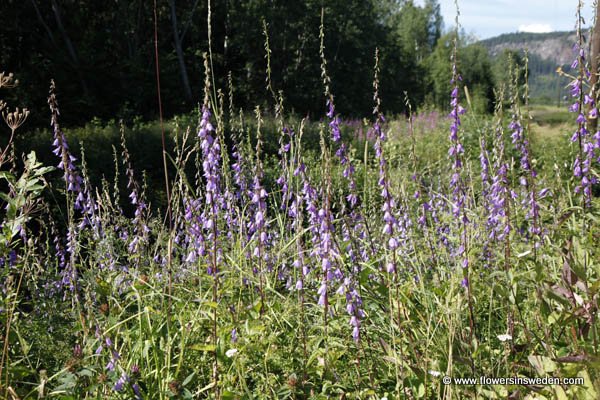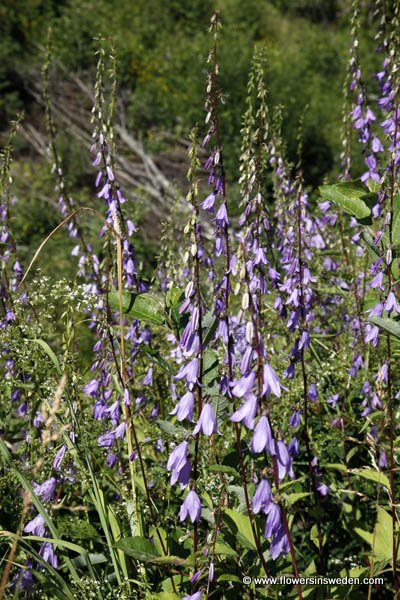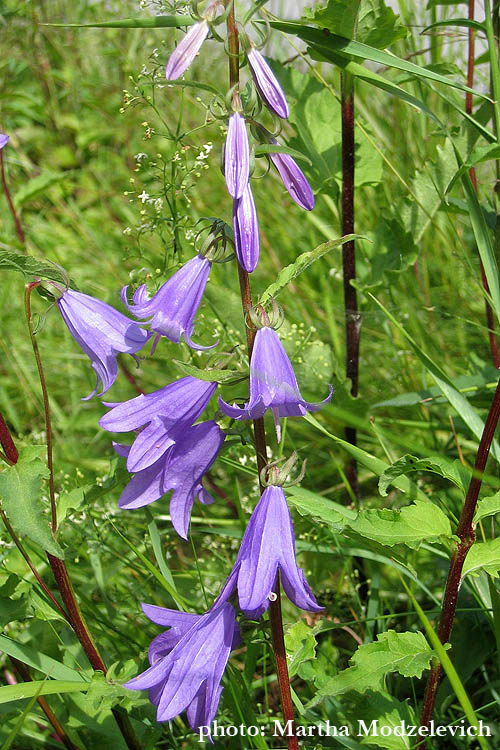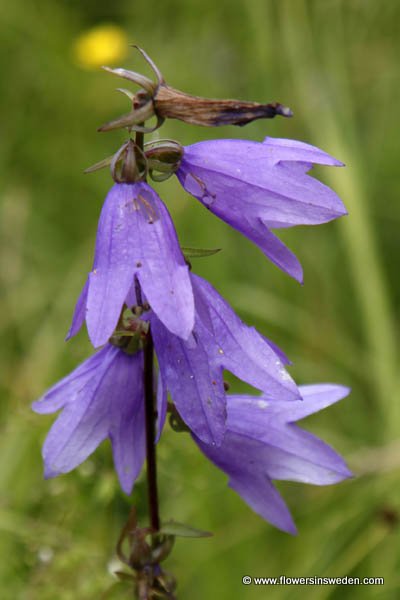|
|
| Life form: |
| Perennial |
| Stems: |
| Height 20–90 cm, light green to reddish brown, glabrous to lightly pubescent, and terete or angular, terminate in an elongated raceme of flowers. |
| Leaves: |
| Alternate,crenate or serrated margins; basal leaves, triangular, narrow, with a heart-shaped or rounded base, up to 12 centimetres long; upper stem leaves, sessile, lanceolate and shortly stalked. |
| Flowers: |
| Spikelike racemes with blue-violet flowers tending downwards, 2 to 4 cm long, with short petioles standing to one side in the axils of the bracts. The bracts are quite different and smaller than the leaves; 5 green linear-lanceolate sepals, widely spreading to recurved, much smaller in size than the corolla. The corolla is bell-shaped, with five slightly ciliate, pointed lobes that are recurved. |
| Flowering Period: |
| June-September |
| Fruits: |
| Capsule, semi-spherical, with spreading hairs, brown, nodding |
| Habitat: |
| Farmland and settlements |

Derivation of the botanical name:
Campanula is diminutive of Late Latin campāna, bell (New Latin: a little bell),
rapunculoides, resembling Rapunculus - meaning "little turnip" referring to the swollen roots.
- The standard author abbreviation L. is used to indicate Carl Linnaeus (1707 – 1778), a Swedish botanist, physician, and zoologist, the father of modern taxonomy.
Campanula rapunculoides is pollinated by entomophily (a form of pollination whereby pollen is distributed by insects (bees, flies, butterflies, etc.)


|




